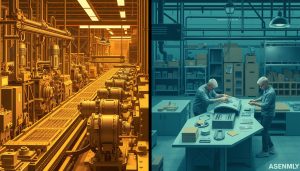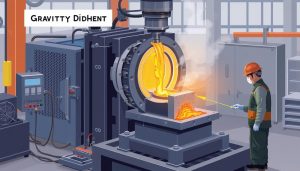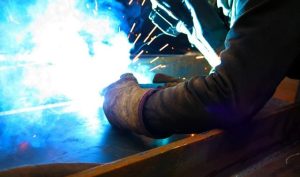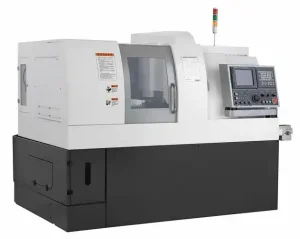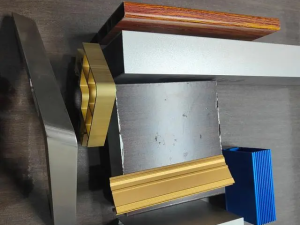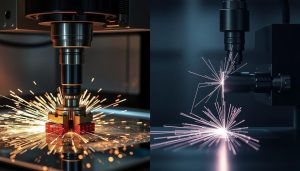The manufacturing world is changing fast with new tech. This digital shift is making production more efficient and innovative. But, how do manufacturers use these new tools to their best advantage? It’s all about knowing the digital manufacturing basics and following the latest trends.
Imagine making your production smoother, more productive, and eco-friendly. The digital manufacturing wave can make this happen. It’s all about using the Internet of Things (IoT) and artificial intelligence (AI) in your work. Are you ready to take your company into this exciting new future?
Understanding Digital Manufacturing
The manufacturing world is changing fast, thanks to new technologies like digital transformation, data-driven manufacturing, and automation. This change is making factories work better, faster, and more competitively.
Key Components of Digital Transformation
Several important parts are leading this digital change in manufacturing. These include:
- Sophisticated robotics and automated systems that can perform complex tasks with precision and speed
- Additive manufacturing, or 3D printing, which enables the rapid production of customized parts and prototypes
- Cyber-physical systems that integrate digital and physical systems, facilitating real-time data monitoring and decision-making
The Role of Data and Automation in Modern Manufacturing
Data-driven manufacturing and automation technologies are key in modernizing how things are made. Advanced analytics and artificial intelligence help make better decisions and improve efficiency. Automated systems, like CNC machines, work faster and more accurately, cutting down on human error.
Using these digital tools changes how manufacturers work. They can meet market needs faster, save money, and make better products for their customers.
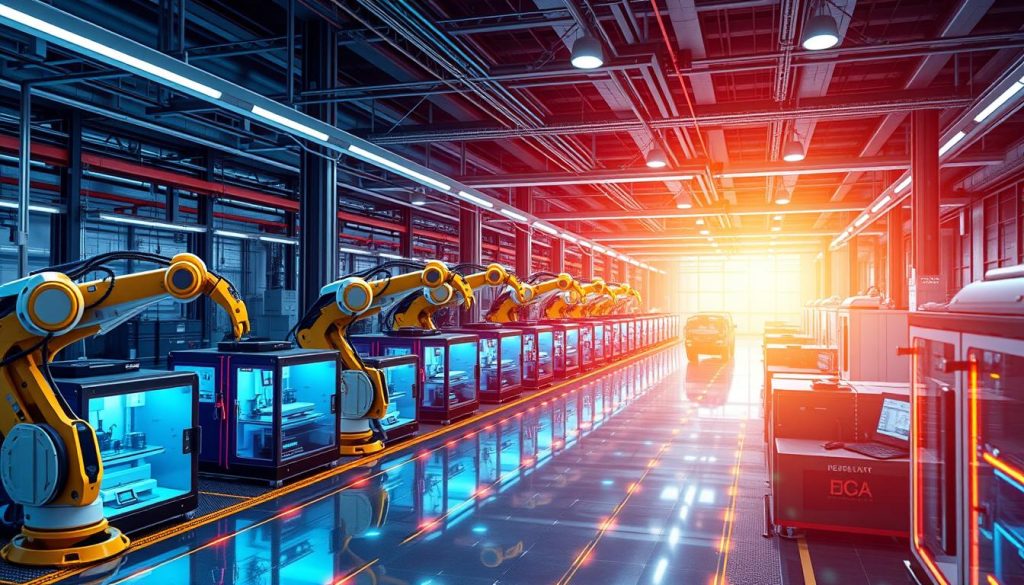
“Digital transformation is not just about technology – it’s about reinventing how you do business.” – Unknown
Trends Shaping Digital Manufacturing
The manufacturing world is changing fast, thanks to new technologies and changing needs. Three big trends are leading this change: IoT integration and smart factories, the growth of artificial intelligence, and a focus on being green.
IoT Integration and Smart Factories
The Internet of Things (IoT) is making factories smarter. It connects machines, sensors, and data systems. This lets manufacturers improve how they make things, check quality better, and cut down on downtime.
This IoT-driven way helps make decisions faster. It lets companies quickly adapt to new market trends and customer wants.
The Rise of Artificial Intelligence in Manufacturing
Artificial intelligence (AI) is becoming more important in making things. It helps manage and improve production lines. AI does things like predict when machines need fixing and checks quality automatically.
AI makes production more efficient, cuts down on waste, and boosts productivity.
Sustainability in Digital Manufacturing Practices
Being green is now a big deal in making things digitally. Companies are using less resources, making less waste, and using clean energy. This not only helps the planet but also makes the industry stronger in the long run.
These trends are changing how products are made, designed, and delivered. By using IoT in manufacturing, AI-driven manufacturing, and sustainable manufacturing, companies can lead the way in the digital age.
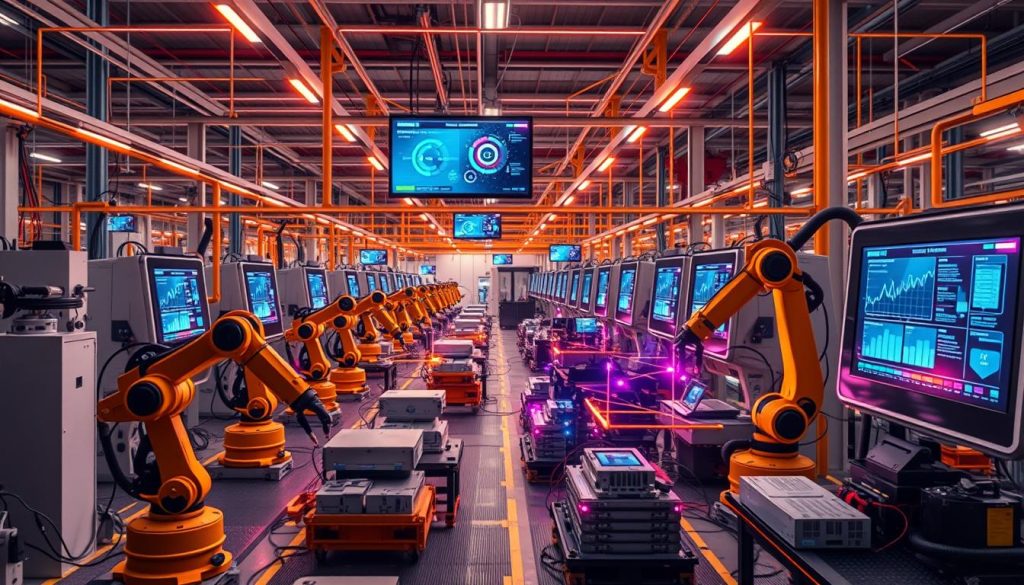
| Trend | Impact | Key Benefits |
|---|---|---|
| IoT Integration and Smart Factories | Optimized production processes, enhanced quality control, and minimized downtime | Real-time decision-making, responsiveness to market conditions, and customer needs |
| The Rise of Artificial Intelligence in Manufacturing | Transforming production line management and optimization | Improved efficiency, reduced waste, and enhanced productivity |
| Sustainability in Digital Manufacturing Practices | Embracing resource optimization, waste reduction, and renewable energy sources | Reduced environmental impact and enhanced long-term competitiveness |
“The future of manufacturing lies in the seamless integration of cutting-edge technologies, sustainability, and customer-centric innovation.”
Challenges in Adopting Digital Manufacturing
Manufacturers are trying to join the digital age, but they face many obstacles. The cost of starting with new systems is high, especially for smaller companies. Also, mixing old equipment with new digital tools is a big technical challenge.
High Initial Investment Costs
Switching to digital manufacturing needs a lot of money. This includes buying new gear and training workers. For companies with tight budgets, this can be a big problem.
They must think about the long-term gains of being more efficient and competitive. But, the initial cost of going digital is a big hurdle.
Integrating Legacy Systems with New Technology
Many factories use old systems that don’t easily work with new digital tools. Making these systems work together is hard. It takes special knowledge and planning to make the transition smooth.
Dealing with compatibility and data transfer issues can slow down the adoption of digital tech. It also puts a strain on the company’s resources.
Skills Gaps and Workforce Training
Having a skilled team is key to using digital manufacturing tools well. But, many factories lack workers with the right digital skills. Training and upskilling programs are essential to make the most of digital manufacturing.
